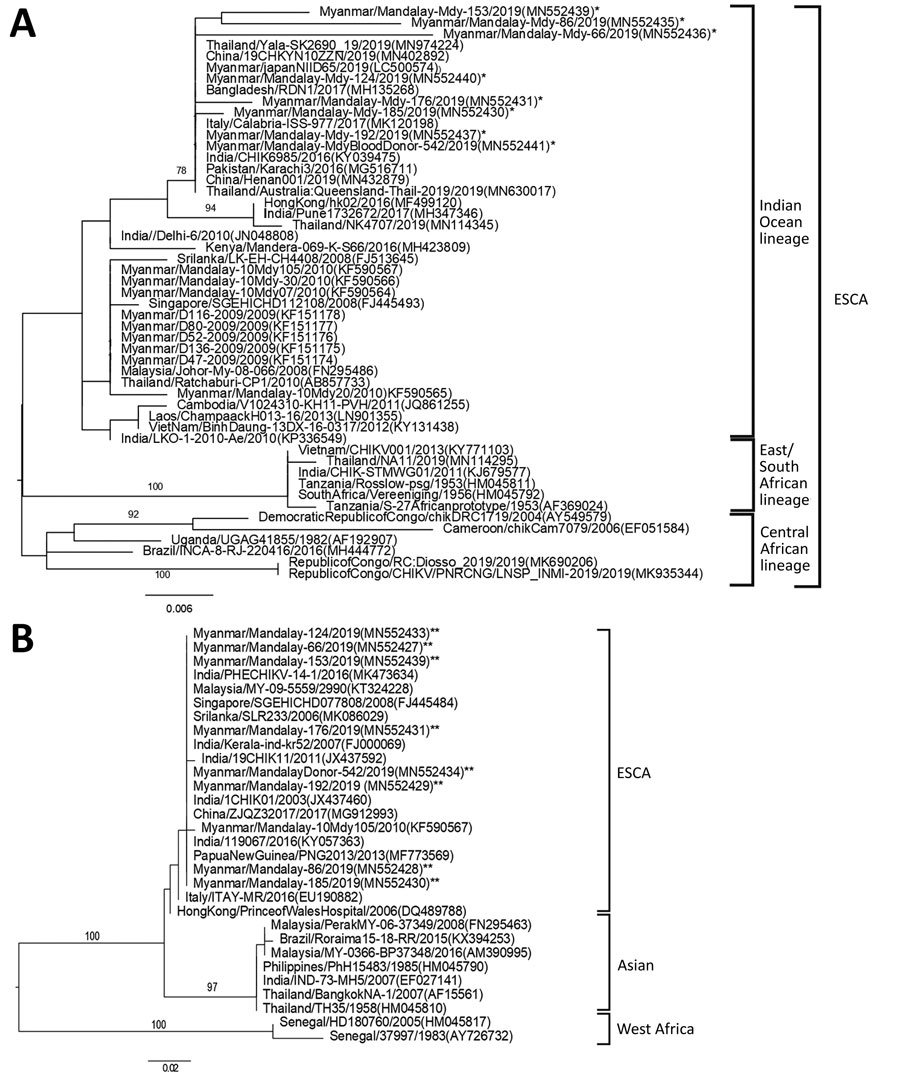Volume 26, Number 11—November 2020
Dispatch
Chikungunya Virus Infection in Blood Donors and Patients During Outbreak, Mandalay, Myanmar, 2019
Figure 2

Figure 2. Phylogenetic trees constructed on the basis of partial nucleotide sequences of CHIKV to show the relationships of CHIKV strains from different sources, including strains detected in Myanmar during 2019 (asterisks). A) Envelope protein 1 gene; B) nonstructural protein 1 gene. Numbers along branches are bootstrap values. Representative strains of each genotype obtained from GenBank are named by country of origin, strain name, year of isolation, and GenBank accession number. Scale bars indicate nucleotide substitutions per site. ESCA, East/Central/South African.
1These authors contributed equally to this article.
Page created: July 31, 2020
Page updated: October 19, 2020
Page reviewed: October 19, 2020
The conclusions, findings, and opinions expressed by authors contributing to this journal do not necessarily reflect the official position of the U.S. Department of Health and Human Services, the Public Health Service, the Centers for Disease Control and Prevention, or the authors' affiliated institutions. Use of trade names is for identification only and does not imply endorsement by any of the groups named above.